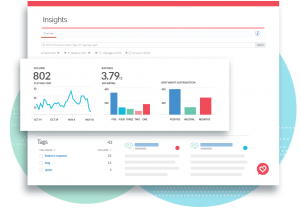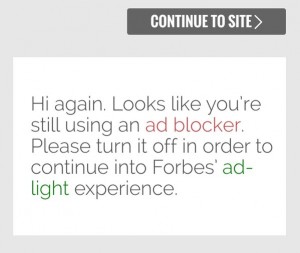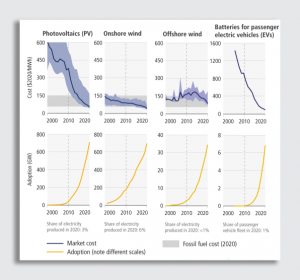For subscription businesses, getting customers and keeping them is a delicate line that they need to balance. While on the other hand, getting customers to sign the dotted line is important, getting them to stay can spell the difference between success and failure. As 65% of every company’s business comes from existing customers, it should be a good habit to focus on retaining them. Improving customer retention saves on marketing costs, increases profits, and improves service quality.
Losing your customers or what is officially called customer churn in business parlance, is a metric that you can’t afford to lose out on. It will bleed out your company slowly, and then suddenly, your business won’t know what hit it. In order to stop the bleeding, however, you first need to understand what you are dealing with and the extent of the damage in order to create retention strategies.
So how do you reduce customer churn?
Before we answer that question, let’s have a quick review of what exactly is customer churn. Customer churn is the exact percentage of your average customers, clients, or subscribers who either end their subscriptions voluntarily or involuntarily cancel or don’t renew their subscriptions during a given time period, divided by the total number of remaining customers, clients, or subscribers. This may seem complicated but It’s just the total number of customers or subscribers canceling or not renewing during a given period of time.
At the onset, customer churn is a problem for most subscription businesses. This is in no small reason to customers losing interest in a product or service once they signed up. But more so because the subscription business is broken. And it’s broken because customers are left to bots and AI.
Why is customer churn so common?
The “SAASification” of the entire support system is partly to blame. According to Casey Graham, the constant push to “SAASify” has put businesses on automatic which left the customers frustrated and abandoned. It was initially a system that was designed to help customers quickly. As a human innovation, it also freed the business owners from the drudgery of repetitive tasks. Bots were more accurate. They are more precise and made fewer mistakes, they saved businesses money, and they worked faster. And more importantly, bots freed the owners to do better work with other things that bots can’t make.
Unfortunately, it went to the extreme of replacing customer service with AI, and automation. As it happens, there are a lot of automatic processes that are set up with the best intentions of efficiency, and service end up inconsiderate and repetitive. This all leads back to a lack of empathy and more unresolved issues.
How do you reduce customer churn?
At the onset, from marketing to the initial sign-up, you have to set proper customer expectations. In an ideal world, every customer is going to love your product and take advantage of the best features it has to offer. But clients have different needs and wants. Customer churn is also sometimes due to inconsistencies in the way you sell and target customers.
But it’s not only about sales and marketing. We’re talking about customer satisfaction. Your customer service is how you measure your reputation and impact.
When dealing with customer churn, Gravy, a failed payment recovery company, recommends that you need to be extra customer-centric. Whether it’s a customer service agent or a product specialist, sometimes a simple message can keep the customers on board. Even canned email responses, when worded properly can help. Gravy believes that not only does an authentic human interaction recover failed payments, it also increases customer loyalty.
Communication
One of the most important strategies is consistent communication and frequent reassurance. Be with them from onboarding to success. Because any issues that the customer might be experiencing would lead them to either to stop subscribing or to unsubscribe. According to a consumer study, 32% of people will stop doing business with a brand or company after just one bad experience. Customers are more likely to add a service or upgrade their existing package if they are satisfied with your service.
Customers should be reassured that their subscriptions are safe and that you are keeping an eye on them. Gravy recommends using personal email, which clearly communicates that your team is aware and ready for any issue that they may encounter.
Quality Customer Support
By placing an emphasis on quality customer support and nurturing your users throughout the onboarding process, you can keep your customers engaged.
Consumers today expect an enhanced in-store or online experience from brands they do business with. That requires a different kind of in-touch brand and customer service. To foster an emotionally connected relationship with customers, personalize your messaging. You could also ask customers for input and feedback to see if your ideas are on-point or if you need to change direction.
All businesses need customers to generate revenue. But some businesses end up being products that simply get people to sell more products to. In business, customer success is essential. Customers that are happy with your product or service are more likely to recommend you to other potential customers. They can also become your online advocates and share your content and join your social media communities.
Understanding Customer Pain Points
People who churn often have a hard time admitting that they might not want your product right now. So you’ll want to understand their pain points and build an internal tool to address them. You can also try a community-building approach, such as your own platform. Let people know you’re listening and give them the opportunity to share their feedback.
Being at the center of your customer’s journey is a responsibility, and can be draining not only psychologically but also on the finances. Big companies that want to be on top of their churn create departments to handle churn. This can be daunting for startups who have very limited runway. The good news is that businesses can take advantage of outsourced personalized services like Gravy’s to handle churn.
Conclusion
Legendary companies take themselves to the next level by paying attention to what so many have come to ignore: their existing customers. Every business owner should pay attention to the factors contributing to a high churn rate to make sure their business does not lose loyal customers who have already done all the paperwork. By going over these steps, they can reduce customer churn throughout the customer journey.
Business & Finance Articles on Business 2 Community
(56)






